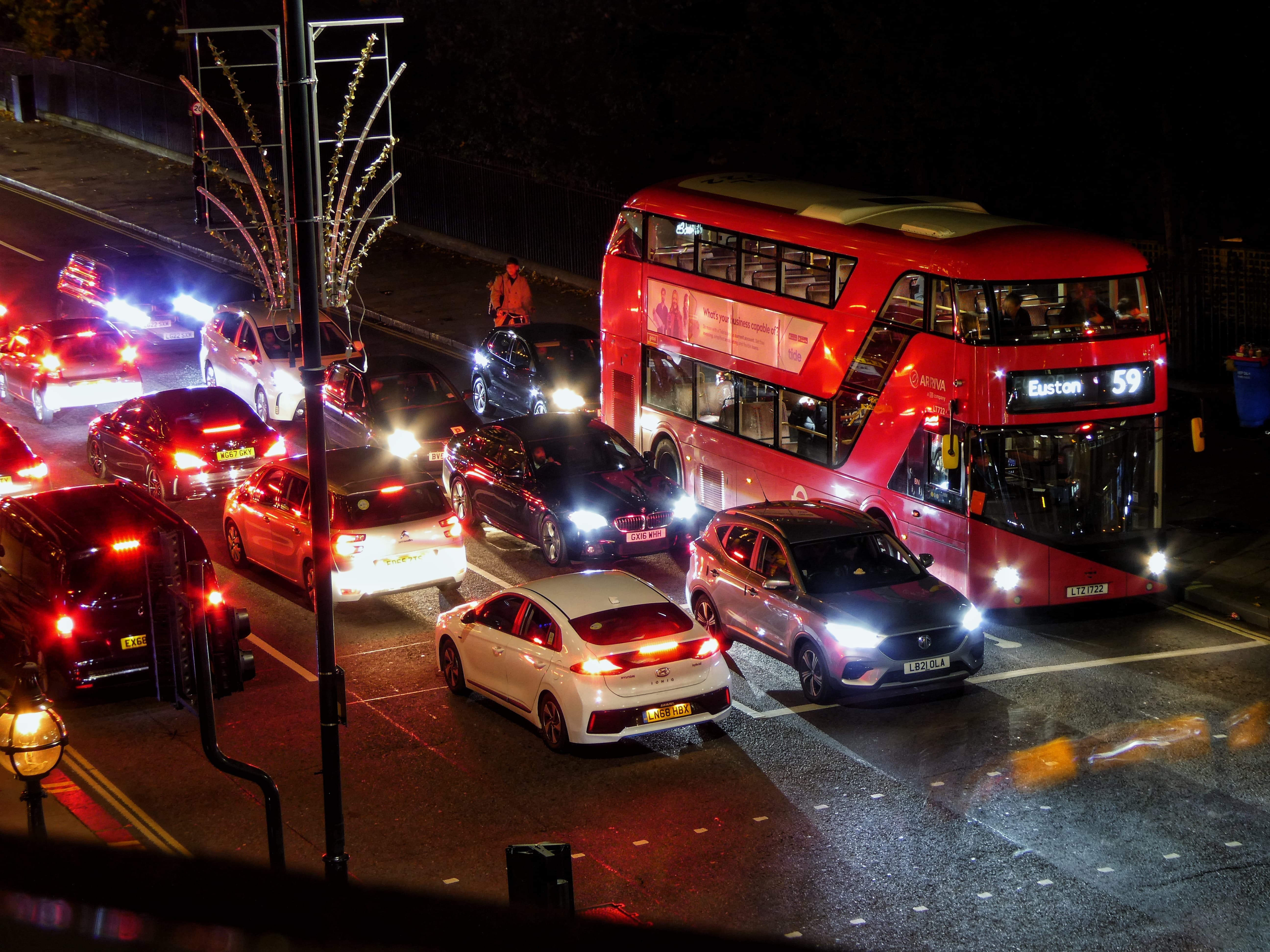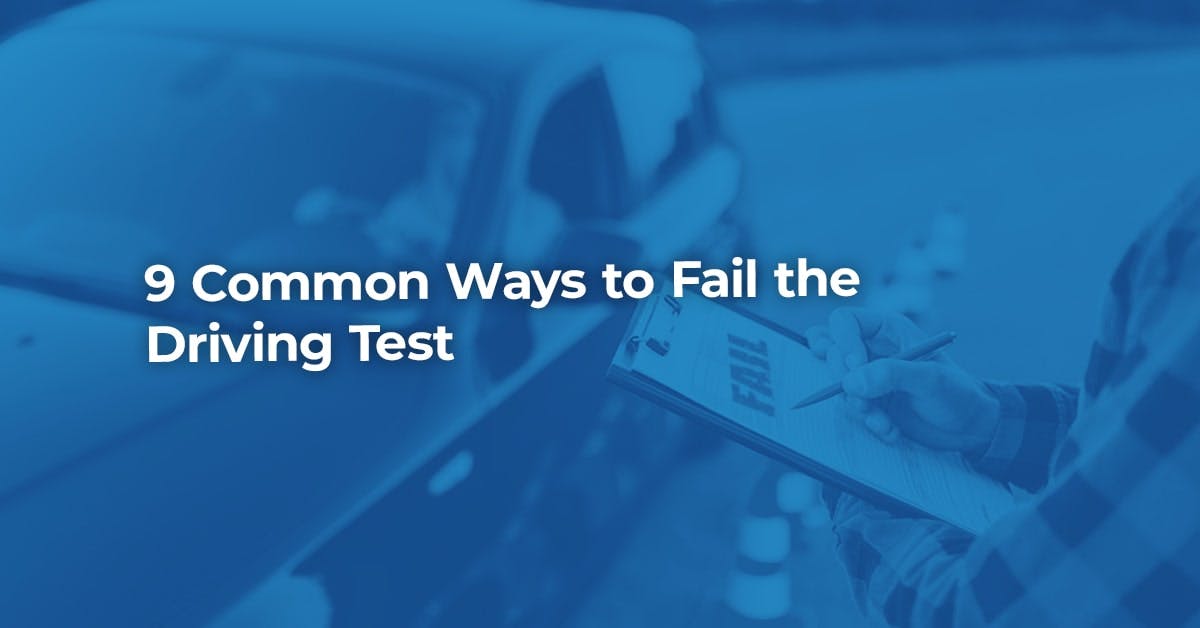Failing a driving test can knock your confidence, so it always helps to be prepared.
To give yourself the best chance of passing your driving test, you need to know the most common ways that people fail the practical driving test.
Read on and find out some of the most common driving test fails, what counts as an instant fail, and what to do if you fail your driving test.
Page Contents
What Are the Most Common Ways to Fail the Driving Test?
There are several common ways of failing the driving test.
Incorrect Use of Mirrors
Not using your mirrors correctly is a common mistake which can result in a failed driving test.
You could fail your test if you don’t check your mirrors before doing any of the following:
- Signalling
- Changing speed
- Stopping
- Changing directions
- Turning
- Switching lanes
- Before an overtaking manoeuvre
- During an overtaking manoeuvre
- After an overtaking manoeuvre
You should check all your mirrors while making a turn, when you change lanes on a dual carriageway, and when overtaking.
If you make this fault, be sure to check your mirrors more often to avoid repeating the mistake.

Poor Observations at Junctions
The risk of a collision increases when traffic flowing in one direction meets traffic flowing in another direction.
That’s why junctions are such an important aspect of the driving test, as they are the site of many potential dangers.
If you exhibit poor observational skills at a junction – be it a major fault or a repeated minor fault– then you may fail your driving test.
You will be tested on different types of junctions throughout the test, including open, closed, marked and unmarked junctions.
You must be able to prove that you can pull out safely into a new road when you leave a junction. Failing to notice hazards around you could put other road users in danger.
Some of the most common junction observation faults include:
- Approaching a junction too quickly or slowly
- Not checking blind spots and mirrors
- Not making observations at an unmarked junction
- Making no observations at all
- Not looking left when turning left
- Entering a roundabout with poor observations
- Looking at junctions too late when turning
Make sure that you maintain an awareness of the state of the road around you, and the speed and distance of other vehicles.
Look for signs that a junction is ahead, such as an increase in traffic, vehicles slowing down, or a – you guessed it - road sign signalling that a junction is ahead.
Work out the direction you need to go and position yourself accordingly, making sure that your vehicle doesn’t cut the corner when making a turn.
Use your mirrors and check your blind spots when you are planning to emerge from a junction so that you can give yourself enough time to react.
Maintain a suitable distance from other cars in the event you need to perform an emergency stop.
Move into the road when you are certain that the path is clear, and act swiftly once you decide to do so.
If you arrive at a closed junction and you can’t see if it is safe to move, edge the car forwards slowly and look from left to right.
If you see vehicles approaching from either direction that are going too fast, stop before entering their path.
When the path is clear, wait for a safe opportunity to fully emerge.
Check your mirrors again to establish where you are in relation to other traffic.
Poor Steering Control
You must use the main controls of the car smoothly and at the right moment - steering can cause a lot of problems for practical driving test candidates.
Whilst you don’t actually have to keep your hands exactly at 10 and 2, incorrect hand position can result in a minor fault.
Oversteering and understeering around corners and keeping one hand off the wheel for too long can also be classed as faults.
Make sure that you always have at least one hand on the wheel and use a push and pull motion to steer.
Forgetting to Check Blind Spots
It is essential that you check your blind spots before you move off from a stationary position like a pedestrian crossing or a roundabout.
This is one of the first things that you will be marked on in the test, so keep it in mind.
Lack of Control When Moving Off
You could fail your test if you show a lack of control when moving off then this could lead to frequent stalling.
To avoid stalling, use proper coordination of the pedals, and make sure that the clutch is fully depressed before releasing the handbrake. Gradually press the accelerator pedal while releasing the clutch.
Take care not to move off with the handbrake on – using the handbrake when stopped at a traffic light or failing to release it when moving off could result in a fault.
Only use the handbrake when necessary and be sure to release it at the right time.
If you do stall, stay calm, restart the car, and proceed with the test.
Not Stopping at Traffic Lights
Not stopping at a red light is a serious driving test fault, but did you know that you could also fail for waiting too long at a green light?
Avoid stopping beyond an advanced stop line or blocking off other road exits too.

Difficulty Reverse Parking
Few drivers love the thought of reverse parking, but it will come up during your driving test.
You will be asked to perform 1 of 3 reverse parking manoeuvres, and losing control whilst reverse or parallel parking could lead to faults. You will also have to reposition your vehicle to correct any misjudgements.
Touching the Kerb
Mounting the kerb, crashing into it, or hitting the kerb when there are people nearby are all actions marked down as major faults which could see you fail your test.
If you drive too close to the kerb, you should adjust accordingly and maintain an awareness of the road around you.
Incorrect or Improper Signalling
If you neglect to signal your intentions properly by checking that the space around you is clear before indicating and turning, then you could be putting yourself and other road users at risk.
Always check your mirrors, signal, and then carry out the manoeuvre.
What Are Instant Driving Test Fails?
If you commit a dangerous or serious fault, you will instantly fail your driving test.
You will have failed due to a critical error or dangerous action that could put yourself, other road users, the examiner or property in danger.
A serious fault could be emerging quickly into a junction without doing the proper observations.
A dangerous fault could be not checking your blind spots before changing lanes, as this could cause a vehicle to swerve, slow or stop.
Will I Fail If I Stall?
If you stall in a driving test, this is unlikely to result in a major fault.
That is, if the stalling didn't happen in a situation that could be dangerous.
For instance, stalling at a busy junction or roundabout is more likely to result in a fail than doing so whilst parked at the side of a road.
What Should I Do If I Fail the Test?
If you fail your driving test, try not to be too hard on yourself.
Learning to drive is a skill that takes time to master - don't measure your success against other peoples'.
It can be anxiety-inducing getting behind the wheel - especially when you know you are going to be graded on your performance.
Failing the test can knock your confidence, but we would encourage you to get back behind the wheel as soon as you are ready.
The more time you spend practicing, the more chance you'll have of passing next time!
Your driving instructor will not suggest that you book another test until they think you're ready.
When booking your driving re-test, you will need to choose a date which is at least 10 working days away - though you may wish to leave it longer.
The booking process will be the same as before.
Your examiner will not have a record of your previous test - they aren't trying to catch you out.
You may wish to ask your driving instructor if you can have some extra lessons before the re-test so that you can address the aspects of driving that you find most challenging.
If you feel that you failed your driving test due to discrimination or the examiner not conducting the test in line with the regulations, then you can dispute the result.
You won't be given a pass certificate even if you are successful, but you may be able to regain some expenses - like the cost of rebooking the test or using the instructor's car - if the complaint is approved.
FAQs
Can I Fail the Driving Test by Driving Slowly?
What Happens If I Fail the Eyesight Test?
Are You More Likely to Fail the Driving Test in Your Own Car?






